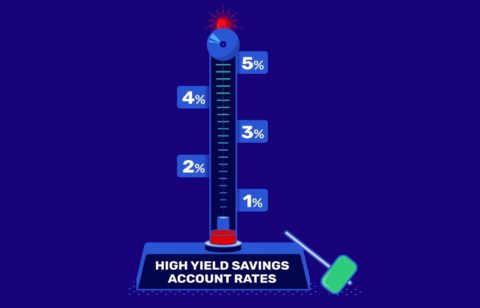The simplest explanation of a 529 Savings Account is that it’s a text-advantaged account for educational expenses.
When it was created, the idea behind it was that it would be a great way for families to handle the ever-increasing cost of college.
The shocking news is that according to two recent reports, one from the investment firm T. Rowe Price and the other from the research company WalletPath, is that only about one-third of all parents are taking advantage of these accounts.
College is the key
Parents understand that college is the key to a better future for their children. According to Gallup polls 70% of Americans surveyed called college “very important.” and they understand that it’s very expensive. An Edward P Jones survey in 2015 found that 80% of Americans said they couldn’t afford it. This raises the question that if most parents understand both the importance and the expensive of college, why are more of them not preparing for it by utilizing the tax advantages of a 529 Savings Account?
They’re just not aware of it
Again, according to Edward P Jones only 35% of those surveyed knew what a 529 plan was. Those surveyed by WalletPath did better as 80% said they at least knew what a 529 savings plan plan was. However, 28% of those that responded to the T Rowe Price survey said they had never even heard of it. Why is this? It’s probably because a 529 savings account is fairly new as it didn’t become totally tax-exempt until 15 years ago.
They don’t understand them
A 529 savings account is a vehicle for saving money and not a specific set of options for investing. The money in these plans can be invested in just about anything including mutual funds, bonds or stocks or even in money market funds or cash.
A Roth IRA is similar to a 529 Plan as in both cases the money you contribute is taxable now but tax free when you withdraw it, along with whatever money the account has earned. Many of the 529’s require very low minimum balances and some allow you to contribute as little as $25 a month.
Most states have their own 529 plans
Almost every state has its own 529 plan. According to T. Rowe Price, some consumers believe that you can only join the one offered by your state or that the money in your account can be used only at your state’s schools to pay for in-state tuition. Both of these are false. If you do decide to invest in a 529 savings account, be sure to first check out the incentives and tax advantages offered to in-state residents. The reason for this is that it may be such a good deal that you would want to choose it.
For example, the state where we live offers a choice of two 529 plans – the CollegeInvest Direct Portfolio and the Scholars Choice College Savings Program. Within CollegeInvest is three tracks – aggressive, moderate and conservative. The aggressive track includes a higher allocation of equities until age 19. In comparison, the conservative option begins with 50% in stocks but there is no investment in stocks by the time the child reaches age 11. In addition, this plan offers eight static options – five blended portfolios and three individual portfolios. The fee charged by this plans’ administrator is a modest 0.46%, which is lower than the national average. It charges no maintenance fees.
Our state’s CollegeInvest Direct Portfolio includes an in-state tax deduction of up to $280,000 for a single filer and the same for joint filers. The manager of this program is Ascensus College Savings and it’s available to out-of-state residents as well as in-state residents.
The Scholars Choice College Savings Program offers an in-state tax deduction of up to $350,000 for both single and joint filers. Its program manager is Legg Mason Global Asset Allocation LLC and it, too, is available to out-of-stay residents. It is an actively managed account and has 11 static options as well as an age-based track and years-to-enrollment option. The fee charged by Legg Mason varies from 0.60% to 2.10%, which is higher than the national average.
They believe the plans are too restrictive
Another problem is that many parents believe that the 529 plans are too restrictive. The truth is they can be used to pay for any of your child’s qualified educational expenses. This means not only undergraduate but also graduate school. It includes tuition, supplies and books, and room and board at any public or private institution that’s accredited. However, those expenses most be what you actually spent that tax year. This means they must be the school’s posted prices less any Pell grants, scholarships or loans your child received accredited
What happens if your child does not go to college?
What happens if your child fails to go to college or if her or his expenses are less then the amount of money in your 529? You can change the account’s beneficiary without incurring any tax penalties and then use the money for yourself or another of your children. If, for some reason you need to take money out of your 529 plan you can do so but you will lose your tax benefits.
They think they can’t afford to make contributions
Many parents don’t think they have enough money to save for their children’s’ education at all. The T. Rowe Price survey also found that 45% of parents are using just standard savings accounts to save for their kids’ educations, which means they’re foregoing the tax benefits of a 529 plan.
Pick a 529 savings account plan and get started
Whether you’re a parent or a grandparent if you have a child you want to see get a college education it’s important to do the research and then pick a 529 plan. You may find that your best option is your state’s 529 plan but it might be another state’s plan that’s open to out-of-state residents. The important thing is to pick one and get started making contributions – to ensure that when the child is ready for college the money is there to help pay for it.
If you’d like to know more about the pros and cons of a 529 savings account, here’s a short video that explains them.
https://www.youtube.com/watch?v=uZk8i66J_fU





